Are you suffering from an acute abdominal pain accompanied by constipation, nausea and vomiting? If you are, you may be suffering from Diverticulosis.
What is Diverticulosis?
Page Contents
Picture 1 – Diverticulosis
Source – picturesdepot
It is a health condition where sacs or tissue pouches come out of the intestinal walls. This is a very common problem in older people. In the US alone, about 10 % of the 40-plus population suffers from this disease. It affects half of all people over 60 years of age. It is also known as “Diverticular disease”.
Diverticulosis Causes
The large intestine in our stomach is responsible for storing and removing feces. In a normal person, the stool or feces are transported to the rectum through the intestine. The muscle layers in the colon push the stool through the intestine. When the stool moves inside the colon, it puts pressure on the colon walls. As a person becomes older, this constant pressure on the colon walls makes the muscles weaker. This causes a sac or tissue to come out of its place. A single sac dislodged like this is known as Diverticulum. A cluster of sacs that come out like this is collectively called Diverticula. The sigmoid colon often becomes thick and narrow because of these sacs.
The Diverticula are formed over a period of time. This is why it is usually detected in older people.
Diverticulosis can appear anywhere in the colon. But it is more common in the left side of the lower abdomen. This is because the colon is narrowest here. Naturally, the pressure on the intestinal walls is highest in this area.
Diverticulosis Symptoms
Generally, Diverticulosis comes with a few symptoms or no symptoms at all. Most Diverticulosis patients do not display any noticeable symptom. But if the colon gets thickened because of Diverticula, there may be some symptoms of Diverticulosis like:
Abdominal Pain
Most Diverticulosis sufferers experience pain or spasms in the lower left region of their abdomen. This usually subsides after a bowel movement. Sometimes, passing gas can reduce the intestinal pressure and also help ease the pain. In many cases, the pain arises after having meals and lessens after some time. If it persists, a clinical examination is needed.
Constipation
Many Diverticulosis patients suffer from constipation problems. The presence of swollen sacs disturbs the smooth passage of stools and cause painful excretion. The patient generally produces pellet-shaped stools in such cases. It is often followed by stomach ailments like a short bout of diarrhea.
Bloating
People with Diverticulosis often suffer from a bloated stomach because of this disorder.
Bleeding
Bleeding occurs in severe Diverticulosis cases. The patient excretes maroon-colored feces that imply presence of blood in stool. There are sudden, mild spasms and an impulse to have a bowel movement. If a lot of blood is lost, the patient may experience thirst, dizziness and rapid heart beat. In some cases, the dizziness may cause the patient to faint. In such severe conditions of the colon Diverticulosis patients need to be hospitalized immediately.
Diverticulitis
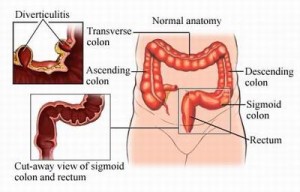 Picture 2 – Diverticulitis
Picture 2 – Diverticulitis
Source – medicalook
In certain cases, Diverticulosis may lead to another disease called Diverticulitis. In severe cases, Diverticulosis and Diverticulitis are very much related. Diverticulitis is actually a complicated form of Diverticulosis where any of the swollen pouches or diverticula ruptures and releases bacteria contained inside them. The bacteria are beneficial for human body as long as they are contained inside the pouches. But when they are exposed, they infect the outer part of the colon. This leads to a severe condition known as Diverticulitis. If the patient develops Diverticulitis, it can lead to severe problems like bleeding, fistula, collection of pus in the colon walls and partial or total intestinal blockage. These can produce a variety of symptoms like nausea, fever, urinary tract infection and more.
Diverticulosis Diagnosis
Diagnosis of Diverticulosis is commonly done with the help of X-Ray tests and intestinal examinations. A flexible tube known as colonoscope is entered through the anus to check the presence of Diverticula. Some doctors recommend a barium enema test, a kind of X-Ray examination, which shows muscular projections in the colon wall. These tests are performed by extremely skilled medical professionals.
If the patient suffers from bleeding problems, doctors suggest an angiography to know the exact location of bleeding.
Other common tests performed on Diverticulosis patients include Computerized Tomography (CT) scan, MRI and Abdominal Ultrasound.
However, a complete diagnosis of Diverticulosis is done by taking the patient’s medical history into account. Doctors also try to know about the diet habits of the sufferer to offer a comprehensive treatment.
Diverticulosis Treatment
The treatment for Diverticulosis does not involve any medicinal cure unless the case is severe. Doctors treat mild Diverticulosis problems with dietary modifications and supplements. A high fiber diet is advised to such patients. Fiber supplements like Serovera AMP 500, Hydrocil or Metamucil are commonly offered as a cure. If the patients suffer from abdominal pain or bloating, anti-spasmodic drugs like Donnotal, Bentyl, Librax or Levsin are used for Diverticulosis cure.
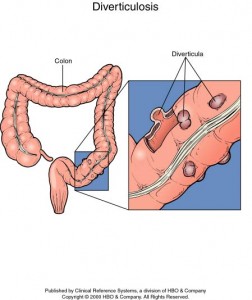 Picture 3 – Diverticulosis Picture
Picture 3 – Diverticulosis Picture
Source – galeon
If the patient develops Diverticulitis, immediate bed rest is needed. The colon needs relaxation for relief. In severe cases, hospitalization is required. Intravenous antibiotics are provided to let the patient make a fast recovery. But if the abdominal pain or bleeding refuses to stop, surgery for Diverticulosis patients often becomes necessary. Diverticulosis surgery involves removing the affected part of the colon and rejoining the healthy ends.
Diverticulosis Diet Food
The diet for Diverticulosis patients essentially comprises of high-fiber foods. Fiber-rich foods keep the stool soft. This lets the stool pass easily through the intestine. It reduces pressure on the colon walls and lowers Diverticulosis symptoms. Some common foods rich in fiber are:
- Breads
- Cereals
- Beans
- Fruits – Apples, pears, raspberries and stewed prunes.
- Vegetables – Potato with skin, green peas, spinach, turnip greens and winter squash.
Diverticulosis patients suffering from constipation are also advised bran as a cure. Sufferers should ideally drink at least 3 to 5 glasses of water or other liquids.
Diverticulosis Foods to Avoid
Some of the foods to avoid for Diverticulosis sufferers include :
- Fruits – Raw and dried fruits, berries and raisins.
- Prune Juice
- Cruciferous vegetables like cauliflower, cabbage, broccoli etc.
- Nuts and seeds
- Celery
- Corn
Diverticulosis diet also excludes alcohol and extremely hot or cold fluids. These irritate the bowel and aggravate symptoms. Foods containing indigestible roughage should be kept out from the diet for Diverticulosis patients.
Diverticulosis Pictures
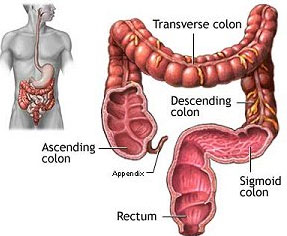
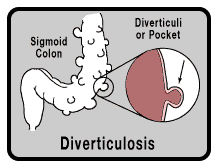
Picture 4 – Diverticulosis Photo Picture 5 – Picture of Diverticulosis
Source – liveblood Source – endowsec
Diverticulosis is a complicated intestinal problem. Go through some of the pictures provided here to get a clear idea about the colon disorder that causes this common ailment.
Reference :
www.nlm.nih.gov/medlineplus/ency/article/000257.htm
en.wikipedia.org/wiki/Diverticulosis
www.medterms.com/script/main/art.asp?articlekey=3083
www.healthscout.com/ency/68/170/main.html

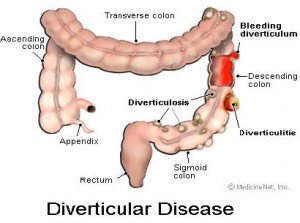
I was diagnosed with diverticulosis then diverticulitis. I was told with my last CT scan that they saw diverticulosis but the infection was gone. I’m on vacation and still have some pain and today some burning which is located on the lower right side of my abdomen. I will call my Dr. tomorrow but wonder if anyone can tell me if they think I need antibiotics. I don’t feel sick like before but do you think another infection is present? I’m a little worried. I don’t want to have another CT scan while on vacation. I am scheduled in a few weeks for a colonoscopy. Should I wait for that. Any help would be appreciated. Thank you.